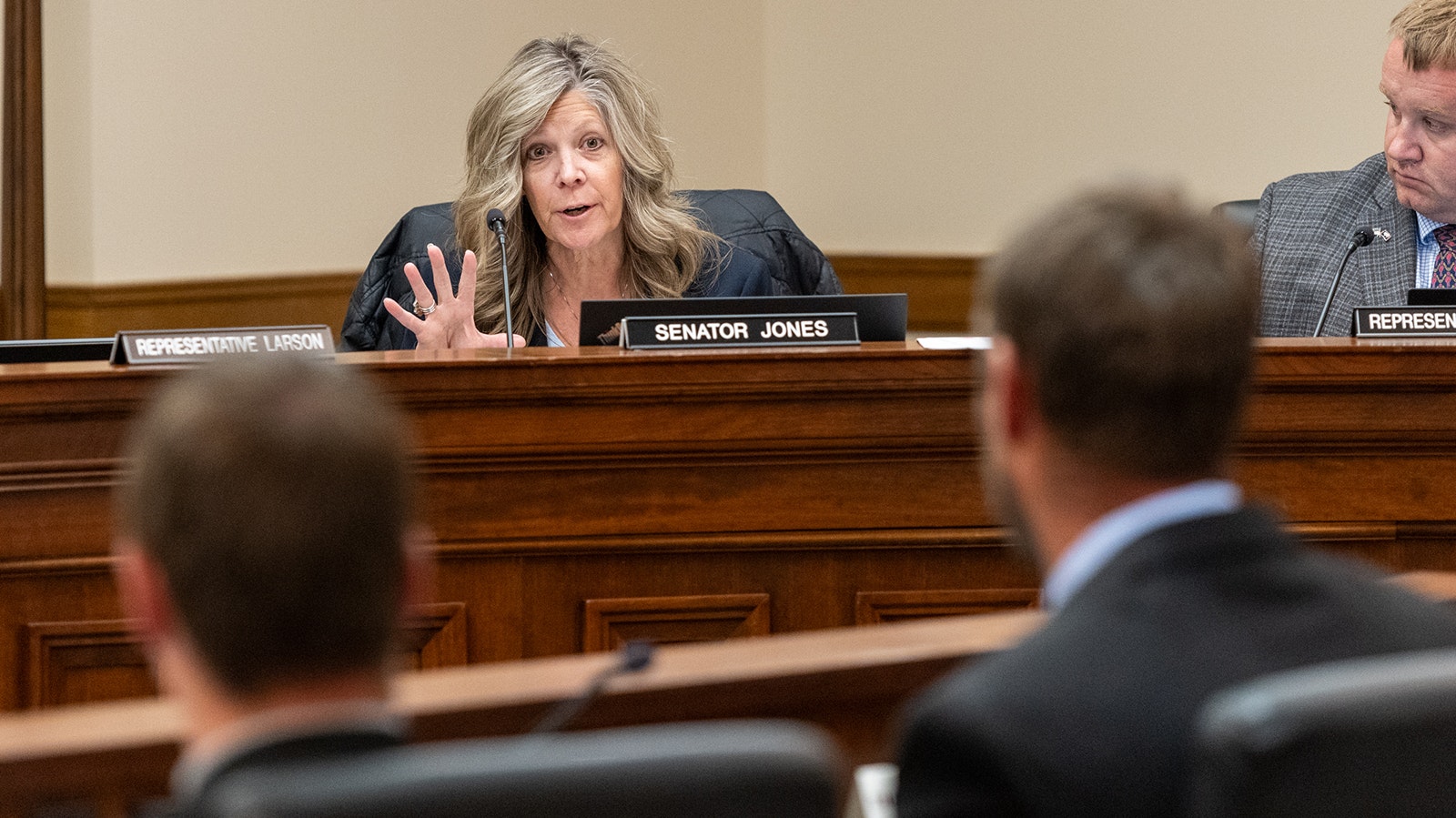Gov. Mark Gordon’s office is already exploring its options for taking legal action against the federal Bureau of Land Management over its controversial Rock Springs Resource Management Plan, Nolan Rap, Gordon’s natural resources policy advisor, told lawmakers Wednesday.
“Those conversations have begun,” he told the Joint Travel, Recreation, Wildlife and Cultural Resources Committee on Wednesday afternoon.
Michael Pearlman, a spokesman for the governor, told Cowboy State Daily last week that any official consideration of legal action would have to come after the BLM finalizes the plan, which has drawn a flood of criticism from ranchers and public land users.
The Rock Springs BLM field office oversees roughly 3.6 million acres in Wyoming. The roughly 1,350-page draft RMP designates 1.8 million acres of that as “areas of critical environmental concern (ACEC).”
Critics say the designation is a way for the federal government and Biden administration to turn a huge swath of public land in southwestern Wyoming into a designated wilderness area, which would limit the permitted public uses of the land.
Rep. J.T. Larson, R-Rock Springs, told the committee that nearly 1,000 people attended a public meeting in his community about the plan last month.
Sen. Stacy Jones, R-Rock Springs, said the plan negatively impacts every sector of her community from business to motorized and non-motorized recreation.
“The plan is actually horrific,” she said. “It affects almost every way of life and every recreation possible in our county.”

Preparing Now
Sen. Affie Ellis, R-Cheyenne, asked Rap if it would be wise and/or acceptable for the Legislature to start saving money for the state Attorney General’s office to potentially fight the plan in court, to which Rap affirmed both could be.
Rep. Don Burkhart, R-Rawlins, chair of the House Minerals Committee, suggested using $1.2 million the Legislature dedicated in 2021 so Wyoming could sue Washington state over its denial of a coal export terminal that would have allowed Wyoming to export coal to Asian markets. The U.S. Supreme Court decided not to take up Wyoming’s lawsuit against Washington, which brought that case to a close and the money unspent.
Burkhart asked Rap if fighting the BLM would be an applicable use of that money, which was expanded during this year’s legislative session. Rap said it’s “definitely worth looking into.”
Last week, Gordon called on the BLM to withdraw its draft RMP.
Rap added that Gordon is particularly concerned about the proposed plan, which the governor believes shifts the public conversation from one of collaboration and constructive input to vitriol and frustration.
The Impacts
One of the major themes among those who testified before the committee Wednesday was frustration with the BLM over what they see as a bait-and-switch ploy by the agency.
“In this case they kind of broke precedent and chose (alternative) B, the most resource-restrictive development,” Rap said. “Basically, where the problems lie.”
Alternative B classifies 1.6 million acres of land as ACEC. There are 200,000 acres of ACEC the field office manages now, so this would push the amount of total critically managed areas to about half of the 3.6 million total acres of land managed by the field office, or a 700% increase.
Significant closures also would impact mineral leasing under the preferred plan.
Work on the new management plan began in 2011 and many public meetings have been held with BLM officials since that time. Many people said they had previously believed the BLM was moving toward a plan that offered less significant changes and more compromise than its announced preferred alternative.
The BLM’s “preferred” plan is the most conservation focused and the most in line with President Joe Biden’s administration’s goals.
Some conservation groups like the Wyoming Outdoor Council have supported the proposed plan, saying it offers strong protection for wildlife, hunting and other forms of recreation on prized land in the Red Desert.
“With its strong protections for wildlife, cultural values, wide-open spaces and recreation, there’s a lot to be excited about in the draft RMP,” Alec Underwood, Outdoor Council program director, said in an August statement.

Change In The Road
Jerimiah Rieman, executive director of the Wyoming County Commissioners Association, has been working with the BLM on the plan since its inception when he worked in the governor’s office.
He told Cowboy State Daily that a clear departure happened in the BLM’s collaboration with the public when the Biden administration took office. The same year Biden was voted into office, 2020, was the last year the County Commissioners Association had any contact with the BLM over the plan.
“Ultimately, it was a Biden administration decision toward increasing environmental conservation,” Rieman said.
Something the governor can use as a “hammer,” Rieman said, are the natural resource plans that most counties around the state have been developing in recent years. Rieman said the BLM is required to explain in the National Register why it didn’t consider these plans if it chooses to go in a direction contrary to their expressed desires.
Motorized Vehicle Impact
The BLM said in its draft use plan that its preferred option would close 4,505 miles of routes and eliminate another 10,006 miles of undesignated, illegal routes.
Forrest Kamminga, trails program manager for Wyoming State Parks, said the BLM has since said these numbers were published in error. He said he’s skeptical about that and, like many others who testified on Wednesday, said they haven’t seen a map provided by the BLM that shows exactly what roads would be closed.
Stacy Jones said she’s concerned about what potential road closures would do to those who use motorized vehicles on BLM lands in her area.
Taylor Jones, a Sweetwater County commissioner, estimated based on off-road vehicle licenses, residents of his county have invested about $100 million in side-by-side vehicles.
“This is a big deal. It’s not just a few guys out there on side-by-sides,” he said.
Many who spoke Wednesday talked about the importance of providing constructive and substantive comments for the BLM to consider.
Leo Wolfson can be reached at leo@cowboystatedaily.com.





